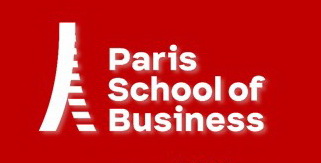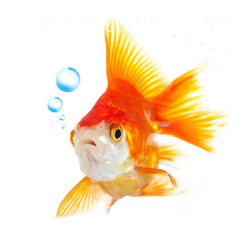This call follows activities previously organized by PSB' newPIC chair and UOC' KiMO research group.
A workshop was organized in March 2016, on PSB Campus, on the topic Microfoundations of Dynamic Capabilities,
under the patronage of AIMS Special group on Dynamic Capabilities.
We are also running at the same time a call for papers for the EURAM 2018 annual conference about
Digital innovation, Strategies, competencies, theories and practice.
Convenors:
- Valerie MERINDOL, PSB / newPIC, email: vm (at) newpic.fr
- Nicolas AUBOUIN, PSB / newPIC, email: na (at) newpic.fr
- Agusti CANALS, UOC / KiMO, email: acanalsp (at) uoc.edu
- David W. VERSAILLES, PSB / newPIC, email: dwv (at) newpic.fr
Deadlines
- 15-JAN-2018: Full papers submission
- 25-FEB-2018: Responses to auteurs
- 25-MAR-2018: Final paper submission
- 3+4-APR-2018: Conference
All submissions will follow a double-blind review process.
The submission process will be documented soon...
Guidelines
- Full papers = 15 to 30 pages (incl. refs)
- Font: Times New Roman, Double spaced
- Working language: All papers shall be written in ENGLISH
(no submission will be accepted in French)
- Any type of contribution is welcome:
literature review, empirical, theoretical or conceptual papers
quantitative or qualitative methodologies
Text of the call
A large variety of technological areas generates today new opportunities for business. This is the case with digitalization, data management,
artificial intelligence, and additive technologies for instance. They prepare for radical technological changes that will most probably instantiate a new
industrial revolution. Boundaries between sectors and rules of competition are drastically reshaped. Various ecosystems emerge with start-ups. To face up
to turbulent environment, large firms have to adapt their organizational design and to redefine their core values (Yoo et al, 2012). These radical changes
are illustrated with new open innovation initiatives aiming at collaborating with start-ups and end-users. This translates also with new business models.
This process implies new creative capabilities (Pandza and Thorpe, 2009). New organizational designs emerge today in order to facilitate the adoption of
these technologies, such as fab labs, living labs, coworking spaces, incubators or a mix of them (Capdevila 2016; Merindol and Versailles, 2017; Aubouin
and Le Chaffotec, 2017). These designs provide opportunities to connecting distant actors and to acquiring new ways of working in the innovation process.
In this context, small and large companies seek new forms of agility. Their transformation covers all dimensions of the organizations:
corporate strategy, ways of working, culture, key resources (Teece et al., 2016), organization of the supply chain (Blome et al. 2013), etc
Agility is “the ability of every organization to perceive and predict available changes in the business environment” (Razmi and Ghasemi,
2015; Alavi et al., 2014). An agile company is an organisation with a broad vision of the new order of the business world, and with a handful of capabilities
and abilities to deal with turbulence. It is intended to capture the advantageous side of changing circumstances (Zhang et al., 2000).
The concept of agility comprises two main factors (Dove, 1996; Kidd, 1995):
- Responding to (anticipated or unexpected) changes in proper ways and in due time;
- Exploiting changes and taking advantage of changes as opportunities
Agility, entrepreneurial capabilities, dynamic capability, and resources orchestration are inter-related concepts used to appraise the ways
companies adapt to turbulent environment (Teece, 2016; Teece et al., 2016) but they are barely articulated to each other. They are also seldom used to
anticipate on the capacity to manage radical technological change incurred by digital technologies, artificial intelligence and the management of big data.
These concepts are intended to analyse and to support how to prepare for a forthcoming transformation, but they are most often only used for providing
retrospective explanations or justifications and seldom associate with the description of actual managerial modalities for decision-making.
This track addresses the following topics (list not limitative):
- How do firms achieve to become agile in order to take advantage of radical technological changes?
- Why do some large companies succeed in becoming agile and others do not? What is the incidence of dynamic capabilities?
How to define organisational agility in reference to the sensing, seizing and reconfiguring aspects of resources orchestration?
- Is the reference to organizational agility a new way to incorporate creative capabilities into the analysis?
- How to characterize the different ways to manage dynamic capabilities and agility for start ups and new actors such as open labs, fab lab, living labs, etc.?
- How to link organizational agility, dynamic capabilities and open innovation initiatives such as crowdfunding, intrapreneurship, internal incubators?
- What are the cognitive processes and managerial capabilities required to achieve agility?
Bibliography
- Andropoulos C. Lewis M. (2009), “Exploitation-exploration tensions and organizational ambidexterity:
managing paradoxes of innovation”, Organization science 20 (4), pp. 696-717
- Anthony S. (2012), "The Corporate Garage", Harvard Business Review, Septembre, pp. 45-53
- Argyres, N. Felin, T., Foss, N.J., and Zenger, T. (2012), “The organizational economics of organizational
capabilities: a research agenda”, Organization Science, vol 23: 1213-1226
- Björk, J., Boccardelli, P. & Magnusson, M. (2010), Ideation Capabilities for Continuous Innovation. Creativity and Innovation Management, 19(4), pp.385–396
- Bottollier-Dupois, F. (2012), FabLabs, makerspaces : entre nouvelles formes d’innovation et militantisme libertaire,
Cahier de recherche de l’Observatoire du Management Alternatif, HEC, août
- Foss, N.J. & Pedersen T. (2004), “Organizing knowledge processes in the multinational corporation: an introduction”,
Journal of International Business Studies, vol 35, pp 340-349
- Foss, N.J. (2011), "Why micro-foundations for resource-based theory are needed and what they may look like"
Journal of Management, 37 (5), 1413–1428
- Lichtenthaler & Lichtenthaler (2009),“A capability based framework for open innovation : complementing absorptive capacity”,
Journal of Management studies, voll46 (8), pp. 1315-1338
- Litchfield R.C. & Gentry R.J. “Perspective-taking as an organizational capability”,
Strategic Organization, 8(3), pp. 187-205
- Schreyogg G. & Kliesch-Eberl M. (2007), “How dynamic can organizational capabilities be? Towards a dual-process
model of capability dynamization”, Strategic Management Journal, vol 28, pp. 913-933
- Teece D.J. (2007) “Explicating Dynamic capabilities : the nature and microfoundations of enterprise performance”,
Strategic Management Journal, vol 28, pp. 1319-1350
- Teece D.J., Pisano G., Shuen A., (1997), “Dynamic Capabilities and Strategic Management”,
Strategic Management Journal, vol. 18 (7), pp.1319-1350
This page will be regularly updated with information for authors.
The workshop program will be posted here once available.









